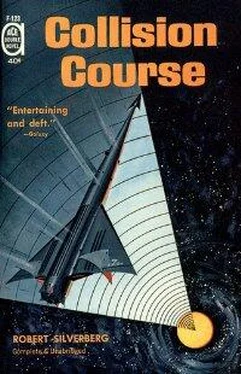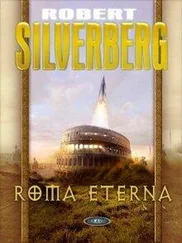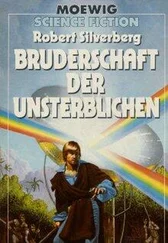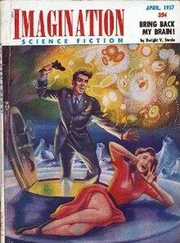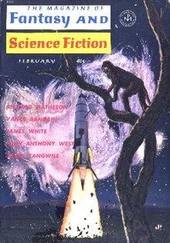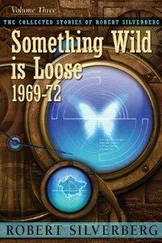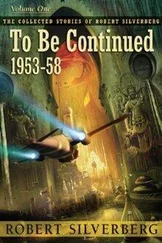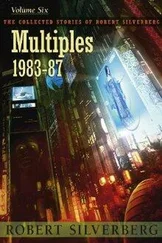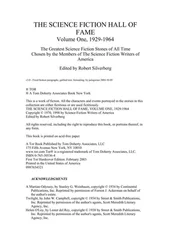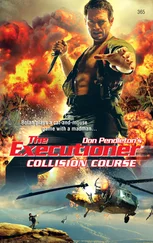Robert Silverberg - Collision Course
Здесь есть возможность читать онлайн «Robert Silverberg - Collision Course» весь текст электронной книги совершенно бесплатно (целиком полную версию без сокращений). В некоторых случаях можно слушать аудио, скачать через торрент в формате fb2 и присутствует краткое содержание. Год выпуска: 1961, Издательство: Ace Books, Жанр: Фантастика и фэнтези, на английском языке. Описание произведения, (предисловие) а так же отзывы посетителей доступны на портале библиотеки ЛибКат.
- Название:Collision Course
- Автор:
- Издательство:Ace Books
- Жанр:
- Год:1961
- ISBN:нет данных
- Рейтинг книги:5 / 5. Голосов: 1
-
Избранное:Добавить в избранное
- Отзывы:
-
Ваша оценка:
- 100
- 1
- 2
- 3
- 4
- 5
Collision Course: краткое содержание, описание и аннотация
Предлагаем к чтению аннотацию, описание, краткое содержание или предисловие (зависит от того, что написал сам автор книги «Collision Course»). Если вы не нашли необходимую информацию о книге — напишите в комментариях, мы постараемся отыскать её.
Collision Course — читать онлайн бесплатно полную книгу (весь текст) целиком
Ниже представлен текст книги, разбитый по страницам. Система сохранения места последней прочитанной страницы, позволяет с удобством читать онлайн бесплатно книгу «Collision Course», без необходимости каждый раз заново искать на чём Вы остановились. Поставьте закладку, и сможете в любой момент перейти на страницу, на которой закончили чтение.
Интервал:
Закладка:
Collision Course
by Robert Silverberg
ONE
Only a month before, the Technarch McKenzie had calmly sent five men to probable death in the name of Terran progress. But now, it seemed, those five men had not really died after all, and McKenzie’s normally rock-hard face reflected inner tension and the strain of anticipation.
The message, reaching him in the Archonate Center, had been brief to the point of curtness. “ Luna detection center reports return to this system of the XV-ftl. Landing at Central Australia spaceport requested for 1200 hours EST .”
The Technarch read the message through twice, nodding, even permitting himself the luxury of a slow smile. So they were back, were they? After a successful trip? By the Hammer , he thought, we’ll see men in the far galaxies yet! And in my Archonate, heaven willing !
His nature was too stern to allow him more than a moment of gloating pride. He had gambled; he had won; and perhaps his name would ring in the galleries of history for millennia. No matter about that, though. The experimental faster-than-light ship was returning safely. It behooved him, as Terra’s Technarch, to be present at the landing.
He depressed a communicator stud. “Set up a transmat connection to the Central Australia spaceport right away, Naylor. Immediate departure.”
“At once, Excellency.”
McKenzie stared for a moment at the big, thick fingers of his hands as they lay before him on the desk. Hands like those could never wire a circuit, wield a surgeon’s excising vibro-knife, or tune the fine controls on a thermonuclear generator. But they were hands that could choke the life from a man, and they were hands that could write, “ If we remain bound forever to the limiting velocity of light, we will be as snails seeking to cross a continent. We must not be lulled into complacency by the slow expansion of our colonial empire. We must surge ever outward; and the faster-than-light spacedrive must be the be-all and end-all of our research effort.”
He had written those words fifteen years earlier, in 2765, and delivered them as his first public address after his accession to the Archonate.
And, fifteen years later, a ship had gone to the stars and returned in less than a month. Perhaps. There was always the chance that they had traveled no farther than the orbit of Pluto, broken down and limped back home. He would find out soon enough.
Rising, McKenzie traversed the gleaming marble floor of his private chamber—a shameful extravagance, he had always thought in his dour way, but the chamber had not been designed with his tastes in mind—and passed through the irising sphincter into his transmat cubicle.
Naylor waited there, an obsequious little man in the stiff black robe of the Technarch’s personal staff. “The coordinates are set, Excellency.”
“Have you been through it?”
“Of course, Excellency. I have tested it twice.”
“Good enough. Leave the field open for my return.”
McKenzie stepped forward. The lambent green transmat field pulsed up from the floor aperture, forming a curtain dividing the cubicle in two. The hidden power generators of the transmat were linked directly to the main generator that spun endlessly on its poles somewhere beneath the Atlantic, condensing the theta force that made transmat travel possible. McKenzie did not bother to check the coordinates Naylor had set. Call it an act of faith; the Technarch was supremely confident that no one schemed his assassination. A minor abscissa distortion, and the Technarch’s atoms would be scattered to the cold winds. He stepped into the glow of green without stopping to examine the coordinates.
There was no sensation. The Technarch McKenzie was destroyed, a stream of tagged wavicles was hurled halfway across a world, and the Technarch McKenzie was reconstituted. If the moment of destruction had been longer, the pain would have been unbearable. But the transmat field ripped the Technarch’s body molecule from molecule in so tiny a fragment of a micro-second that his neural system could not possibly have relayed the pain; and the restoration to life came with equal speed. Whole and undamaged, McKenzie stepped through the field and out, almost instantly later, in the transmat cubicle at Central Australia spaceport, in what once had been the barren Gibson Desert and which now harbored Earth’s largest spacefield.
It had been shortly before noon in New York; here, it was early the following morning. A wall clock read 0213 hours. McKenzie left the transmat cubicle.
They spotted him at once; the Technarch’s toweringly commanding figure was a familiar sight here, and they came running to greet him. They were a tense lot. McKenzie smiled a Technarch’s greeting at Daviot and Leeson, who had developed the warp-drive that powered the experimental ship; at Herbig, the spaceport commandant; at Jesperson, the coordinator of faster-than-light research.
McKenzie asked, “What’s the news from the ship?”
Jesperson grinned boyishly. “They sent the all-okay signal five minutes ago. They’re in a deceleration orbit, coming down on rocket drive, and they’ll make touchdown at 0233 hours.”
“How about their trip?”
Leeson said in his rumbling basso, “It seems they made it out and back.”
“We don’t know that for sure,” Daviot objected.
McKenzie scowled. “Make up your minds.”
Daviot said, “All we know is that they quote switched from warp-drive to plasma-drive some time last evening near the orbit of Jupiter, unquote.”
“Doesn’t that mean that the warp-drive was a success?” Leeson demanded.
“All it means,” said Daviot pedantically, “is that they succeeded in converting from one kind of drive to another. It doesn’t mean that the warp-drive necessarily took them anywhere.”
“No, but…”
“All right, quiet!” Jesperson said, as if detecting the growing annoyance on the Technarch’s face. “We’ll find out the story in twenty minutes.”
“But the Technarch wanted to know…” Daviot began, and let the sentence come to a dying fall.
McKenzie turned away. They were near the roof of a great transparent dome that covered hundreds of acres. Outside, on the spacefield, the temperature was stifling even now, in the morning’s small hours. Within, silent conditioners maintained a more livable climate.
The Technarch looked up and out. The clear desert air, utterly transparent, yielded a magnificent view of the heavens. Stars speckled the black sky like gleaming jewels; above, the full moon cast its brightness over the field. Men raced busily over the field’s seared surface, readying it for the ship that was plunging down toward Australia from the sky.
McKenzie felt a constriction in his throat, another in the pit of his stomach. It irritated him to be so tense, but no stern command could relax him.
In twenty minutes—nineteen—eighteen—the XV-ftl would be returning.
He looked at the stars. Hundreds, thousands of them, sprinkled across the sky. Every star within a radius of four hundred light-years that bore a habitable planet—and that was most of them—had been reached by humanity. For centuries now, ships traveling at nine-tenths of the speed of light had coursed outward to the stars, prisoned by the limiting velocity but still capable of eating up the parsecs, given enough time. It had taken six years to make the first one-way trip to the Centauri system; the return, via transmat, was all but instantaneous.
But you had to reach the stars before you could plant the transmat pickup there, and that was the stumbling-block. Ever outward, by little hops, the empire of Man expanded— but always hampered by the inexorable mathematical limits of the known universe. Once a planet could be reached and linked in the interstellar transmat network, it was as close to Earth as any other point within the network. The transmat gave infinite connectivity—once the link had been established. But until then…
Читать дальшеИнтервал:
Закладка:
Похожие книги на «Collision Course»
Представляем Вашему вниманию похожие книги на «Collision Course» списком для выбора. Мы отобрали схожую по названию и смыслу литературу в надежде предоставить читателям больше вариантов отыскать новые, интересные, ещё непрочитанные произведения.
Обсуждение, отзывы о книге «Collision Course» и просто собственные мнения читателей. Оставьте ваши комментарии, напишите, что Вы думаете о произведении, его смысле или главных героях. Укажите что конкретно понравилось, а что нет, и почему Вы так считаете.
